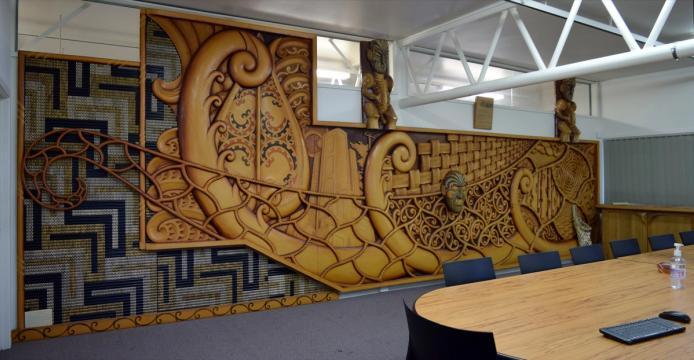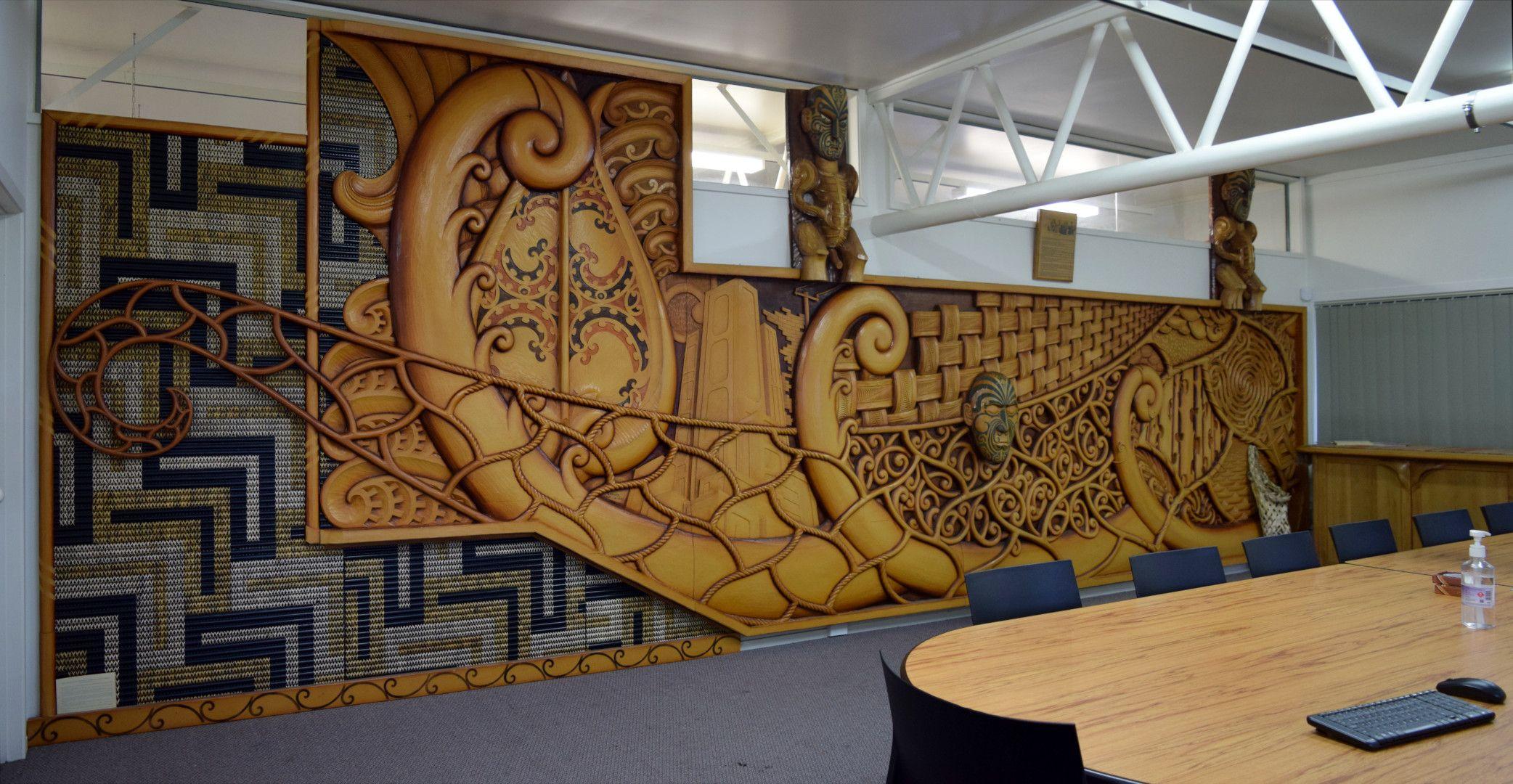Kaitiaki Whenua
Lyonel Grant
Type
- Carving
- Whakairo
Medium
- Customwood/MDF
- Glass
- Textile
Dimensions
- H2920 x W8340

Lyonel Grant (Ngāti Pikiao, Te Arawa), ‘Kaitiaki Whenua (1987), Te Papa Atawhai Department of Conservation, Tauranga
Image: Bronwyn Holloway-Smith, Public Art Heritage Aotearoa New Zealand, 2022

- DETAILS
- MAP
Description
The mural spans the length of the boardroom telling the legend of Rangi and Papa. The plaque accompanying he work explains:
"Rangi, the Sky Father, spans the glass panel embracing Papatuanuku, the Earth Mother, who provides the foundation for this work of Art. From Rangi and Papa emerges the story of Aotearoa. The three dominant punga fronds represent birth, life and death; the eternal cycle. They also serve to tell a story through four divisions of time. The large fronds cradle young fronds symbolising re-birth – surrendering the old for the new. Rangi appears with two sons, Tawhirimatea – the God of the Elements at his left and Tane – the God of the Forests at his right. The story begins extreme right, in a time before the influence of man. Tawhirimatea, portrayed as a tekoteko, crowns the elements; water, earth, air and fire and indeed, the whole world of nature. Land occupations follows, depicted by the 'tattooed face', the 'moko', which carries a prowess distinctive to the Māori.
The thatched area above the moko signifies the passage the Māori, from the past to the present. The thatching also represents the sails which harnessed the winds which brought the migrant fleets from ancient Hawaiiki to Aotearoa.
The overlaying surface design – which becomes more dominant – portrays the influences of ‘modern society’ on the Māori. Time moves on and a city becomes dramatically into focus, an indication of rapid change. The adjacent stylised pattern, enveloped like a seed, shows a promise of better things to come through Mankind’s efforts to co-exist harmoniously with his natural world. The Department of Conservation’s symbol emphasises its role as ‘Kaitiaki” or “Caretaker” over the land’s natural resources.
The story unfolds but there is no end for life is eternal; symbolic of the woven turapa or tukutuku. Its pattern is the 'Poutama' or 'stairway to heaven' which to the Māori signifies a way of life, striving forever to attain faith, courage and wisdom. The stairway holds the end of a net which has crossed the barriers of time, passing through four evolutionary changes, linking the past, present and future."
The composition is carved in custom-wood, with tukutuku and woven basket textiles. The original placement was on a wall elevating over steps, with windows between pou. Part of the original mural, etched glass panels described as "Rangi, the Sky Father", went missing after the move to Tauranga. This can be seen in the photograph provided by DOC.
